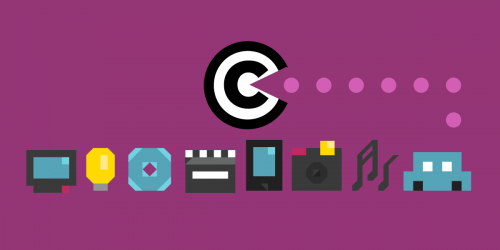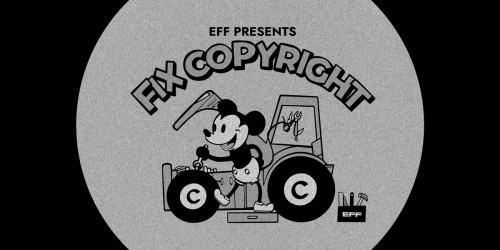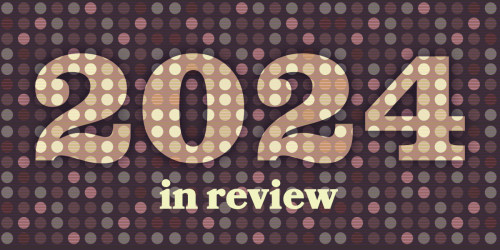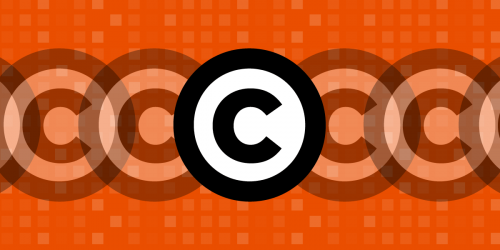News Media Alliance’s Call to Weaken Protections Is Dangerous
When copyright law and the First Amendment come into conflict, the First Amendment must win. The fair use doctrine—the idea that there are certain ways that you can use a piece of copyrighted work regardless of whether you have the rightsholder’s permission—was written into copyright law to help ensure that copyright holders’ wishes are never elevated above free speech. As such, it’s been an essential tool for defending a free press: without fair use protections, people and companies in the public eye could use copyright law to ban coverage that’s critical of them. It’s alarming, then, to see an association that represents news companies asking the Trump transition team (and presumably Congress) to change the law and weaken fair use.
The News Media Alliance (formerly the Newspaper Association of America) recently released a whitepaper addressed to the Trump transition team (PDF). NMA asks for “strong copyright protection” that will “[allow] for a return on [the news media industry’s] massive investment.” In essence, it claims that Google News and similar aggregators steal newspapers’ profits.
It’s unclear exactly how NMA wants news aggregators regulated. A copyright law that would bar websites from linking to and posting short excerpts of news articles? When similar laws have been proposed and passed in Europe, they’ve been shown to hurt newspaper revenues and keep new voices out of the journalism market.
According to NMA, “[o]utdated interpretations of copyright laws mean that the industry is currently forced to give away much of its product for free.” That's an odd charge to level against copyright law. The law certainly doesn’t force newspapers to adopt a try-before-you-buy business model. A copyright regime in which it’s illegal to link to and provide information about other sites’ content would threaten work that print and Web journalists do every day.
Indeed, a core principle of a free press is that you can report on others’ speech regardless of whether you have their permission. In 2011, Bloomberg obtained and published a recording of a conference call that Swatch Group had held to discuss its financial performance. Swatch sued Bloomberg for copyright infringement. The case went to an appeals court, which recognized that Bloomberg’s use of the recording was fair. The judge pointed out that Swatch’s demands ran contrary to the very idea of a free press: “That kind of activity, whose protection lies at the core of the First Amendment, would be crippled if the news media and similar organizations were limited to sources of information that authorize disclosure.”
Even more troubling is NMA's call to “refocus the fair-use test” as part of a “Copyright Act rewrite.” For over 25 years, one of the key concepts that courts have used to determine if a use is fair is to look at whether that use is transformative—that is, whether it creates something new or fulfills a new purpose that the original work did not. The test was first coined in a 1990 article by Judge Pierre Leval and adopted by the Supreme Court in 1994.
NMA claims that the transformative use test “dramatically weakened” copyright and “undermined the integrity of the long established fair use factors.” The implication that transformativeness is a recent phenomenon is misleading. And again, NMA seems to be asking the government to revoke rights that journalists rely on: the use of quotations and eyewitness photos in news reporting is itself a form of transformative fair use. Glibly asking to change the fair use statute, which has been the bedrock of copyright law's free speech protections since it was written into the Copyright Act in 1976, is short-sighted and dangerous.
There’s a storied history of people and corporations in power trying to use copyright law to veto journalism they don’t like. In 2003, Diebold attempted to use the Digital Millennium Copyright Act (DMCA) to force Internet service providers to censor documents showing that Diebold was aware of flaws in its electronic voting machines. When EFF sued on behalf of the student activists who posted the documents and the nonprofit ISP that hosted them, the court didn’t just find that Diebold was in the wrong; it found that the company had intentionally abused the DMCA, knowing that no copyright infringement had taken place. The transformative use test, the very test that NMA seems to be calling to eliminate, is what allowed activists to report on flaws in voting machines that posed a threat to American democracy.
Politicians have tried to use copyright as an instrument of censorship too. Take Ecuadorian president Rafael Correa, who appears to have attempted several times to use the DMCA to take down photographs and other content posted by his critics.
As Mike Masnick points out in Techdirt, NMA’s memo is particularly ironic in light of President-elect Trump’s troubled relationship with the news media. With a President-elect who routinely threatens to sue the press and has promised to “open up” libel laws so that he can more easily sue newspapers for their coverage of him, it’s troubling for an organization representing the news media to advocate for policies that would compromise journalists’ ability to defend themselves.
The whitepaper also recommends an end to various restrictions on the media, including laws intended to make it more difficult for news organizations to develop monopolies. It’s obvious that NMA is looking to Trump’s promise to deregulate business. That strategy doesn’t seem to apply to its copyright policy, though—laws restricting search engines and news aggregators from cataloguing copyrighted content are the opposite of deregulation.
Powerful copyright holders often attempt to write off fair use, treating it as a loophole in copyright law or an old-fashioned relic. When lobbyists trivialize fair use, they’re really trivializing your freedom of expression. We’ve gotten used to hearing large entertainment conglomerates disregard the importance of fair use to a free society. But a group that claims to represent the news media? That’s shocking.
There’s a reason why the section of U.S. copyright law that defines fair use specifically notes its importance to news reporting and commentary. Fair use is one of the safety valves in copyright law intended to protect First Amendment rights. Today, journalism is more crucial to public life than it’s ever been. The press can’t afford to weaken one of its most important tools.









